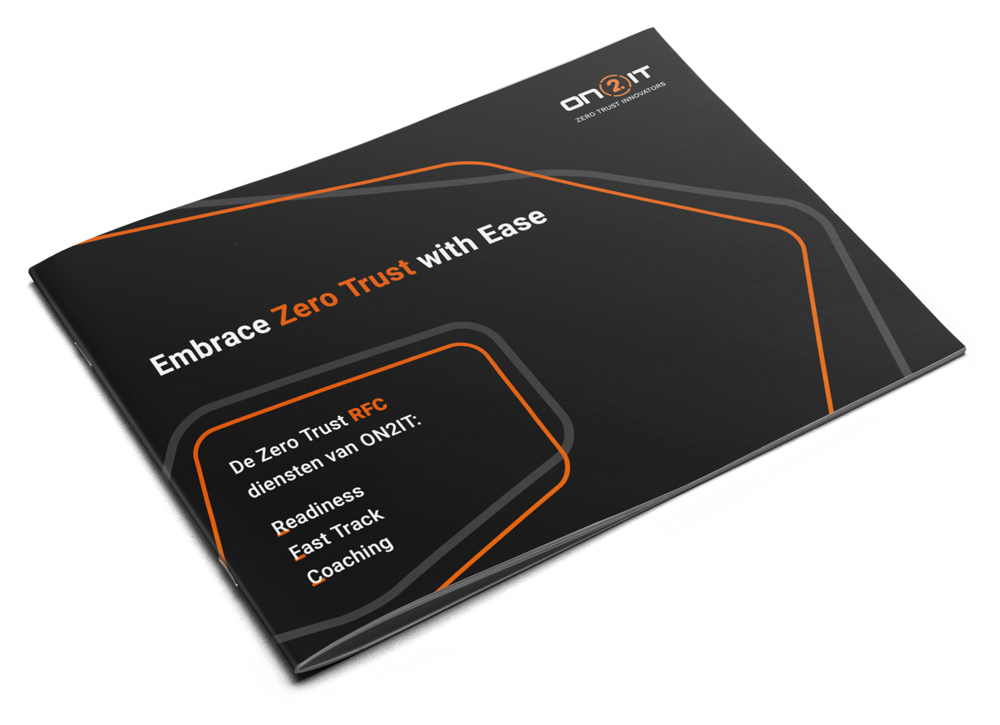Reading Time: 3 minutes
Category: How we do Cybersecurity, Zero Trust
Security isn’t about locking doors after intruders have come and gone. It’s about designing a world where they never get in.
Imagine waking up to find someone’s broken into your house. You change the locks, install cameras, maybe even adopt a loud dog. But deep down, you know the truth: you acted too late.
That’s how many organizations still approach cybersecurity: locking doors only after someone’s been inside. They remain trapped in a reactive mindset: How many attacks have I repelled? Who tried to hack me?
Real security isn’t about these kind of statistics. It’s about a strategy that prevents access in the first place.
KNOW WHAT YOU’RE REALLY PROTECTING
To get security right, you have to know what matters most. What are your organization’s crown jewels? And it’s not your infrastructure, software, or even your people. It’s your data: personnel records, financials, customer data, intellectual property. That’s what attackers want. That’s what your organization can’t afford to lose.
Infrastructure and software are not the goal; they are the means. Focusing on protecting the data, rather than the tools around it, is critical.
NEVER TRUST, ALWAYS VERIFY
ON2IT embraces Zero Trust as John Kindervag envisioned it: “never trust, always verify.” Every user, device, and application must prove who they are, demonstrate why they need access, and be subject to real-time inspection. This isn’t about being paranoid. It’s about being realistic.
Importantly, it’s also about being proactive.
The old, reactive way, was to build one giant wall around your network and hope no one got through. But once an attacker breaches that wall, they can move freely.
A purely reactive way creates a false sense of security. Your SIEM dashboard may detect known malware signatures, but zero-day exploits slip by unnoticed. If you only defend against what you already know, you miss the constantly evolving nature of attack techniques, and you’re always behind.
Reactive responses also come with enormous cost and inefficiency. After a breach, organizations pour millions into legal settlements, fines, and repairing reputations—expenses that a proactive Zero Trust strategy could have prevented.
Zero Trust changes the architecture. It breaks things down into protect surfaces, small, targeted shields around your most valuable data. Each isolates a limited data set, protected by its own controls, telemetry and policies.
This approach allows for:
- Focus on business outcomes:
Security is aligned with what the organization actually needs to achieve, rather than driven by abstract infrastructure models. - Design from inside out:
Controls, segmentation, and access policies are built outward from the assets that matter most, ensuring that protection is truly centered on what needs safeguarding. - Determine who/what needs access:
Every user, application, and device must demonstrate both identity and purpose before gaining access to any protect surface, minimizing unnecessary exposure. - Inspect and log all traffic:
Every transaction, movement, and access attempt is inspected, logged, and evaluated against policies in real time, providing complete visibility and a continuous audit trail of all activity around sensitive data.
Compartmentalizing in this way minimizes the blast radius of any breach, prevents lateral movement across data sets, and moves decision-making authority closer to the assets themselves.
STOP ASKING “WHAT HAPPENED?”
Zero Trust shifts the focus from reaction to prevention. It’s not about being lucky or fast enough to catch attackers. It’s about building systems that make intrusion nearly impossible from the start.
With ON2IT, Zero Trust isn’t just a framework. It’s an operational mindset. One where trust is never assumed, access is always verified, and your most valuable assets are continuously protected.
So instead of waiting for something to go wrong, you build with the confidence that you’re already one step ahead.


